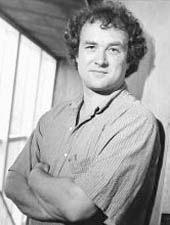Flint, A. J., Tiganis, T., Barford, D., Tonks, N. K. (March 1997) Development of ''substrate-trapping'' mutants to identify physiological substrates of protein tyrosine phosphatases. Proceedings of the National Academy of Sciences of the United States of America, 94 (5). pp. 1680-1685. ISSN 0027-8424
Preview |
PDF
Tonks_PNAS_1997.pdf - Published Version Download (415kB) | Preview |
Abstract
The identification of substrates of protein tyrosine phosphatases (PTPs) is an essential step toward a complete understanding of the physiological function of members of this enzyme family. PTPs are defined by a conserved catalytic domain harboring 27 invariant residues, From a mutagenesis study of these invariant residues that was guided by our knowledge of the crystal structure of PTP1B, we have discovered a mutation of the invariant catalytic acid (Asp-181 in PTP1B) that converts an extremely active enzyme into a ''substrate trap.'' Expression of this D181A mutant of PTP1B in COS and 293 cells results in an enzyme that competes with endogenous PTP1B for substrates and promotes the accumulation of phosphotyrosine primarily on the epidermal growth factor (EGF) receptor as well as on proteins of 120, 80, and 70 kDa. The association between the D181A mutant of PTP1B and these substrates was sufficiently stable to allow isolation of the complex by immunoprecipitation, As predicted for an interaction between the substrate-binding site of PTP1B and its substrates, the complex is disrupted by vanadate and, for the EGF receptor, the interaction absolutely requires receptor autophosphorylation. Furthermore, from immunofluorescence studies, the D181A mutant of PTP1B appeared to retain the endogenous EGF receptor in an intracellular complex, These results suggest that the EGF receptor is a bona fide substrate for PTP1B in vivo and that one important function of PTP1B is to prevent the inappropriate, ligand-independent, activation of newly synthesized EGF receptor in the endoplasmic reticulum, This essential catalytic aspartate residue is present in all PTPs and has structurally equivalent counterparts in the dual-specificity phosphatases and the low molecular weight PTPs, Therefore we anticipate that this method may be widely applicable to facilitate the identification of substrates of other members of this enzyme family.
| Item Type: | Paper |
|---|---|
| Uncontrolled Keywords: | CATALYTIC MECHANISM TERMINAL SEQUENCE CRYSTAL-STRUCTURE HUMAN-PLACENTA SPECIFICITY RECOGNITION CLONING 1B PURIFICATION EXPRESSION |
| Subjects: | Investigative techniques and equipment bioinformatics > genomics and proteomics > genetics & nucleic acid processing > protein structure, function, modification > protein types > enzymes bioinformatics > genomics and proteomics > genetics & nucleic acid processing > protein structure, function, modification > protein types > enzymes > protein tyrosine phosphatase |
| CSHL Authors: | |
| Communities: | CSHL labs > Tonks lab |
| Depositing User: | Matt Covey |
| Date: | March 1997 |
| Date Deposited: | 18 Dec 2013 16:11 |
| Last Modified: | 11 Sep 2019 16:32 |
| PMCID: | PMC19976 |
| Related URLs: | |
| URI: | https://repository.cshl.edu/id/eprint/29046 |
Actions (login required)
 |
Administrator's edit/view item |


